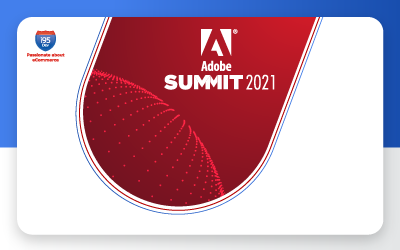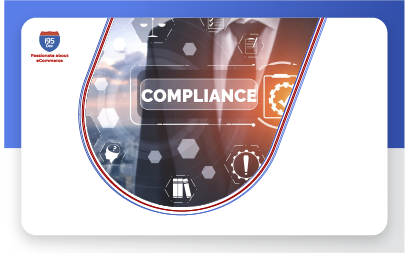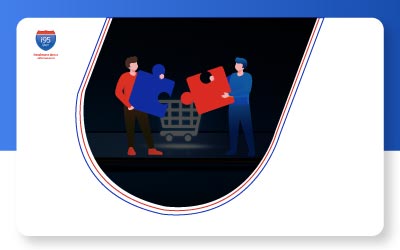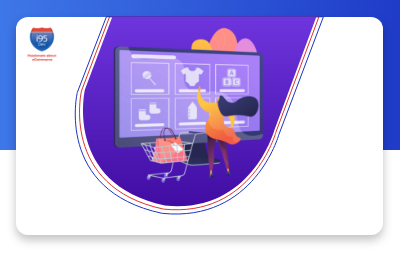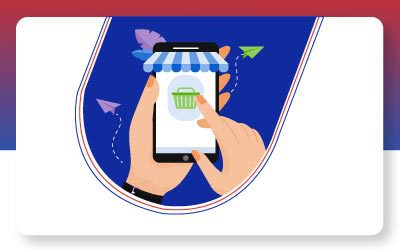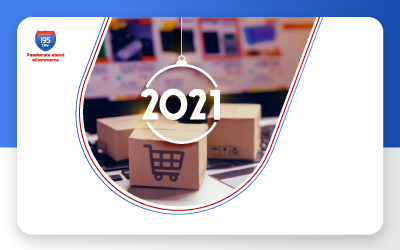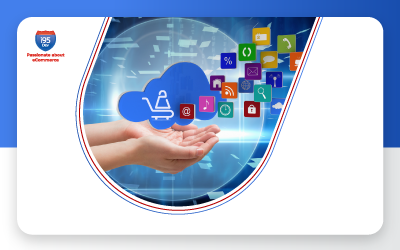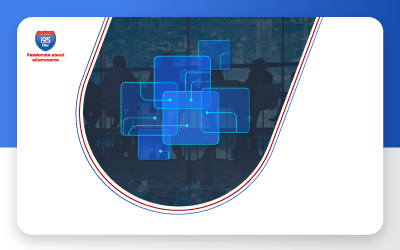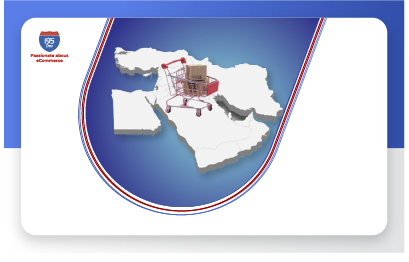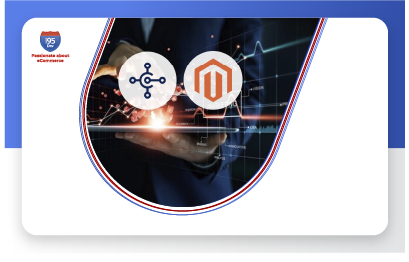8 Ways E-commerce and Microsoft Dynamics
GP Systems Complete Each Other
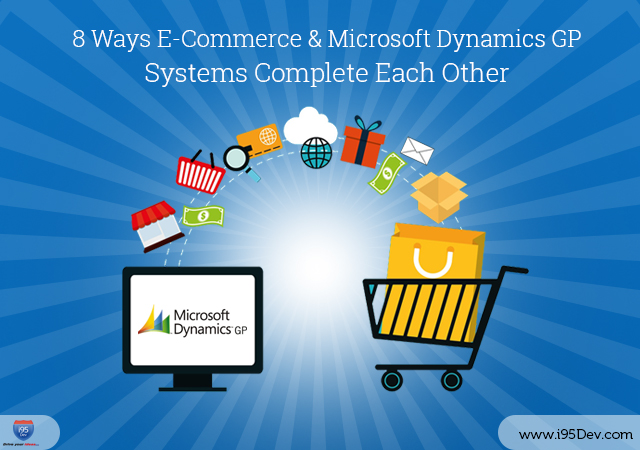
In our eBook “18 Crucial Reasons you should Integrate ERP and E-commerce” we have talked at length how businesses can benefit from E-commerce and Microsoft Dynamics GP integration. Since published, the e-book has been our most downloaded resource to date.
While the customers were convinced about the benefits, they often wondered the reason for such a strong synergy between the two systems. To help customers put their curiosity to rest, we will in this article look at how E-commerce (read Magento) and Microsoft Dynamics GP systems complete each other. Which, ultimately helps businesses gain the competitive edge by better leveraging the investments already made in these systems.
How E-commerce completes Microsoft Dynamics GP System
1) By adding ability to REACH CUSTOMERS 24X7
For businesses, Microsoft Dynamics GP ERP has been the backbone of their businesses helping them manage all backend operations while sales happened on traditional sales channels. But, the traditional sales channels limit your business by constraining who can reach you and when they can reach you.
The Missing piece, E-commerce. E-commerce already is a sales channel to reckon with and promises to play a more important role in the near future – According to eMarketer, the retail e-commerce sales worldwide is expected to jump from $1.67 trillion in 2015 to $3.58 trillion in 2019.
An online store gives customers the ability to shop from businesses 24×7. What’s more? The e-commerce store also makes it convenient for businesses to reach a wider audience (businesses are no longer constrained by your physical location), improves their discoverability (by leveraging its SEO capabilities), and makes it possible to sell across multiple channels and devices, and more.
While they are conscious of the increasingly important role e-commerce plays, they are reluctant or slow to adopt e-commerce because the ERP system lacks that functionality. With e-commerce and Dynamics GP ERP integration, businesses can do more than they could with either system alone.
2) By providing an enhanced CONTENT MANAGEMENT SYSTEM
ERP systems, in general, have always lacked a good content management system forcing businesses to either store limited information (mostly text) or store information in using flat files or information management systems.
The missing piece, E-commerce. The role of content cannot be emphasized enough in the world of e-commerce. One of the primary drivers for the increasing popularity of e-commerce has been its ability to assist customers research and compare products before making a purchase. Because of which e-commerce platforms have a dynamic content management system that not only supports text but also content like images, videos, and more.
With the help of a content management in e-commerce; it is not only easy to manage and maintain this information but also helps with SEO (increasing visibility) and makes way for an enhanced customer experience. With e-commerce and Dynamics GP (or any other ERP) integration, the flow of information is uniform across both these systems leading to uniformity in interaction with audiences.
3) By making it easy to REACH CUSTOMERS and PERSONALIZE EXPERIENCE
Your Dynamics GP ERP system is a repository of information; any operation goes on record and is carefully stowed away. The challenge businesses face today is to put this kind of data to actual use; especially in this time and age of cut throat competition.
The missing piece, E-commerce but of course. Robust e-commerce platforms are powerhouses of functionality; you can actively drive marketing and promotional activities from your e-store. Based on insights from data on customer behavior and buying history from your ERP and e-commerce systems it is possible to target audiences in an effective and personalized manner.
For example, a customer logs on to your e-commerce store and looks for a specific product and leaves without purchasing because the product is no longer in stock. With e-commerce and Dynamics GP ERP integration, post stock replenishment the information is synced from Dynamics GP ERP to the e-commerce system. The information can then be used, in conjunction with information on customers who looked for that product when the product was not in stock, to send them a personalized email informing them the product is in stock and encouraging them to complete their purchase.
4) By making it easy to ACCEPT PAYMENTS
Your Microsoft Dynamics GP ERP is an internal system to your organization designed to support your backend operations. While order fulfillment happens in the ERP system there is very little support for accepting payments in the ERP system (this might be necessary depending the way you operate your business – authorize and capture during order placement or authorize during order placement and capture after shipment, etc.).
The missing piece, E-commerce. Payments are at the core of an e-transaction; e-transactions ends with an entry of payment information indicating the closure of a sale. E-commerce businesses today embrace a large number of payment options while adhering to the security and compliance requirements (PCI compliance).
This makes it easy for businesses to accept payments online any time; moving away from the long and traditional paper-based transactions. While e-commerce makes it easy for businesses to accept payments online, e-commerce and Microsoft Dynamics GP integration makes it convenient form the to capture payments once the order is fulfilled – the integration synchronizes the order fulfillment updates from Dynamics GP to e-commerce systems which can then automatically trigger payment capture.
How Microsoft Dynamics GP completes E-commerce System
5) By taking care of ORDER FULFILLMENT
While an order originates in the e-commerce store, the fulfillment happens in Dynamics GP ERP system. While most e-commerce platforms give businesses flexibility to raise invoices and shipments, order fulfillment is more than that. E-commerce stores do not have updates on inventory availability, stock in transit, procurement details or anything related to demand/supply.
The missing piece, Dynamics GP ERP. Microsoft Dynamics GP aid e-commerce stores in the scheduling of orders for hassle-free fulfillment; by taking into account the occasional hiccups because of the shortfall in stock in the warehouse, delays in procurement, and more.
With e-commerce and Dynamics GP ERP integration, businesses can automate order sync from e-commerce to ERP system minimizing order aging. It can also help in improving customer experience by syncing order status and shipping tracking number from Dynamics GP to the e-commerce system, thereby keeping customers informed about their order status in real time. This allows you to switch your focus from operational activities to activities that can drive more value for your customers.
6) By helping, MANAGE INVENTORY better
While a robust e-commerce store fuels businesses’ ambition of aggressive online selling, how aware are they with respect to stock availability – if something is out of stock, or if there is a shortfall in stock or if there is a product that which needs to be pushed out faster? In addition, with sales happening over multiple channels (physical stores, online marketplaces, etc.), e-commerce systems are not the right systems to manage inventory.
The missing piece, Dynamics GP ERP. The Dynamics GP ERP system stores information on orders received from all channels, orders handled/ fulfilled, inventory in stock and inventory in transit (purchase orders). In short, without an ERP system businesses are limited in terms of their knowledge on inventory availability and on the timing of when a purchase order should be raised.
In addition, with e-commerce and Dynamics GP ERP integration this information is transferred back to the e-commerce system, which improves customer experience by preventing customers from placing orders for products out of stock while paving the way for selling across multiple channels and driving omni-channel experience. Moreover, this also makes way for additional options like buy online and pick up in-store, sell inventory in your retail store, etc.
7) By taking care of ACCOUNTING and ACCOUNT RECEIVABLES
Your role as a business owner does not definitely end with the sales/revenues your e-commerce store generates. For measuring the performance of the business, it is also important to track businesses’ account receivables and other inflows and outflows (outside of sales).
The missing piece, Dynamics GP ERP. For prudent accounting, it is important to for a business to have the ability to track the inflows and outflows of the business. The accounting module of the Dynamics GP ERP bridges that gap for businesses. As an advanced solution, Dynamics GP helps in collating data while simplifying the process of creating the reports.
While this information can also be manually entered into the ERP system, e-commerce and Dynamics GP integration automates this processes improving efficiency while minimizing the chances of errors (common in manual data entry processes).
8) Taking care of TAXES AND COMPLIANCE
Taxes can present a big challenge for businesses. With innumerable tax rules, that change by location, product and other things, compliance is a huge task in itself. While things are little convenient for businesses operating out of physical stores, the complexity goes up by multiple levels when businesses start selling on e-commerce store or across multiple channels. In addition, the tax rules are still evolving for e-commerce businesses.
The missing piece, Dynamics GP ERP. For most businesses, their ERP (Dynamics GP) has been the backbone for most operational activities, taxes, and compliance. The ERP system can centralize all sales orders and tax calculations, thereby making it easy for businesses to calculate taxes and file them. E-commerce and Dynamics GP integration can help automate the transfer of sales orders and tax information from e-commerce to Dynamics GP system.
Conclusion
Developments in technology, rapidly changing customer expectations, and changing business dynamics between all business and suppliers/ distributors/ competition have made operations a lot more complex. Systems in use such as Dynamics GP ERP and e-commerce have well defined and distinct roles to perform, but businesses cannot afford to be limited by their individual roles. There is a need to get more out of each one of these systems and integration holds the key to it.
While this is true for other systems as well, e-commerce and Dynamics ERP systems present the perfect use case for how integration enables either system to get more out of the other system.




